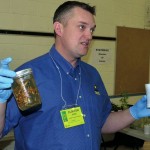A suspected severe case of clubroot just across the border in Cavalier County, North Dakota is a wake-up call for Manitoba farmers. “I’m drawing attention to this because it’s at high levels right there so you can probably expect it’s at high levels close by and there is greater risk in those areas (close to








